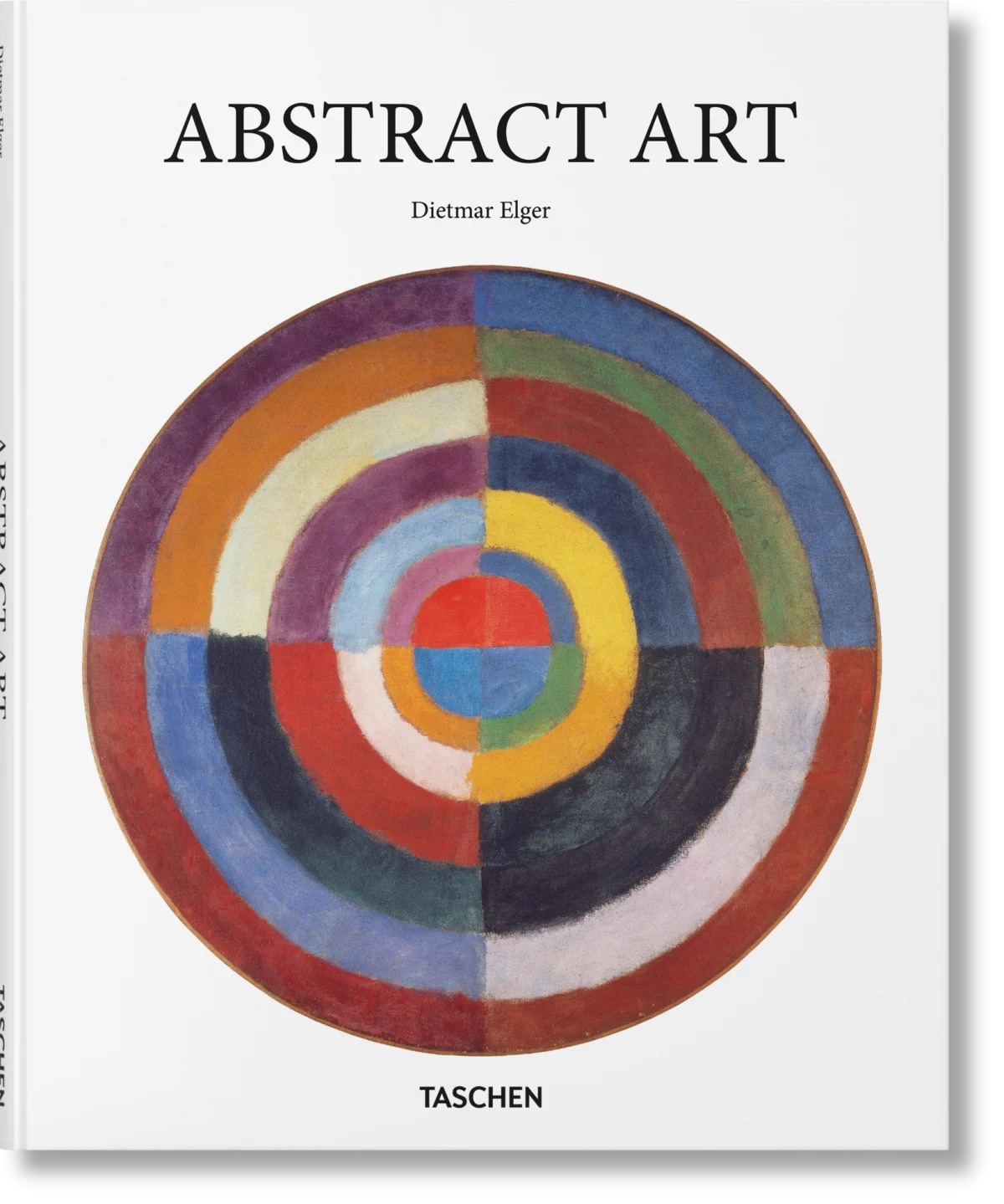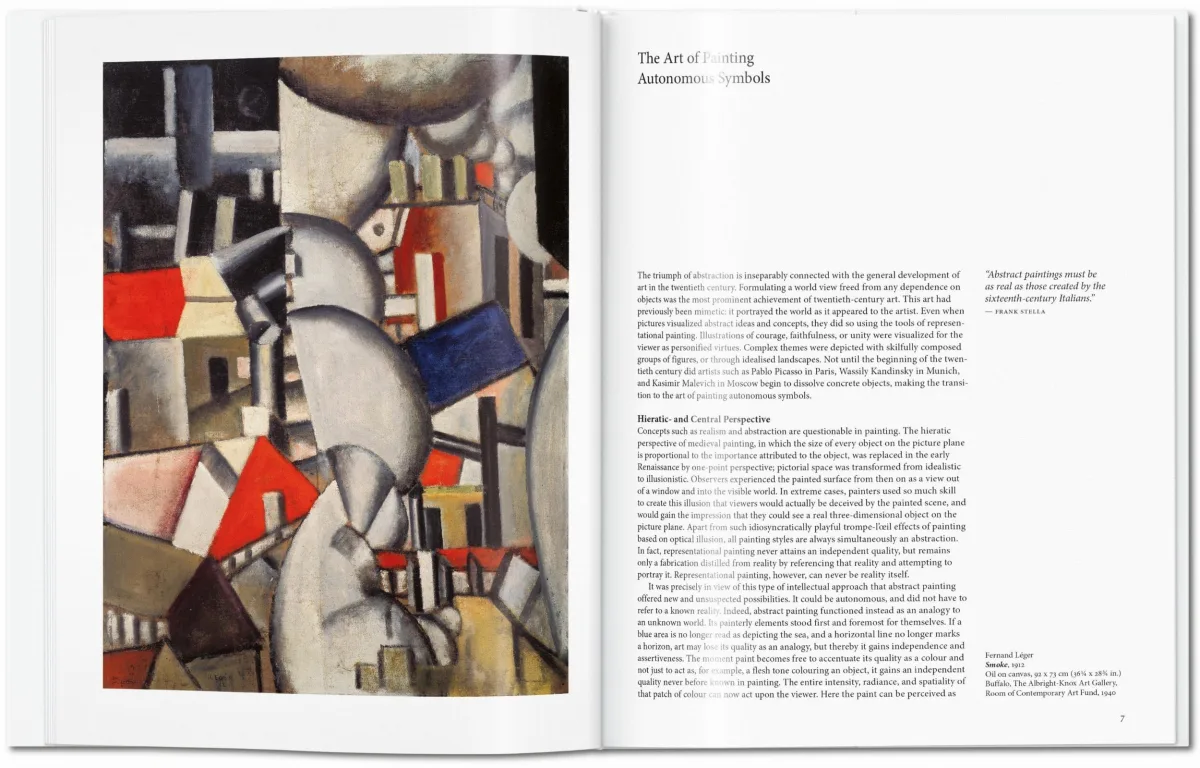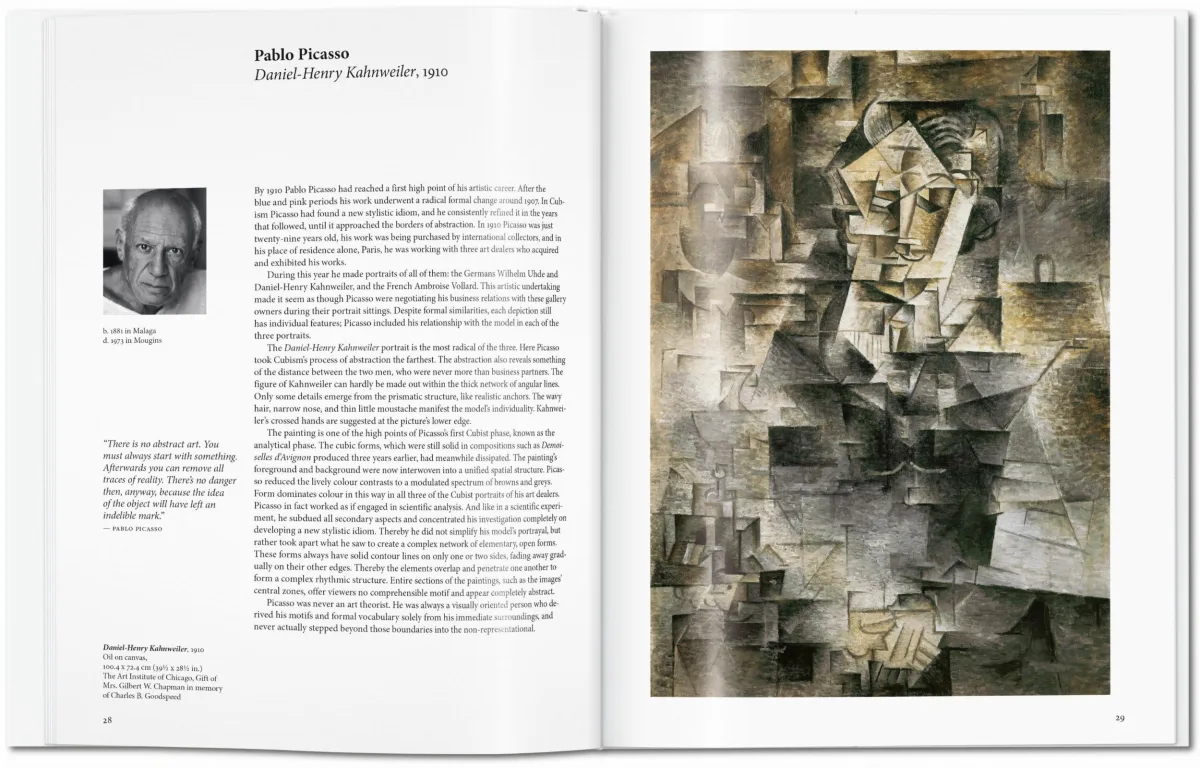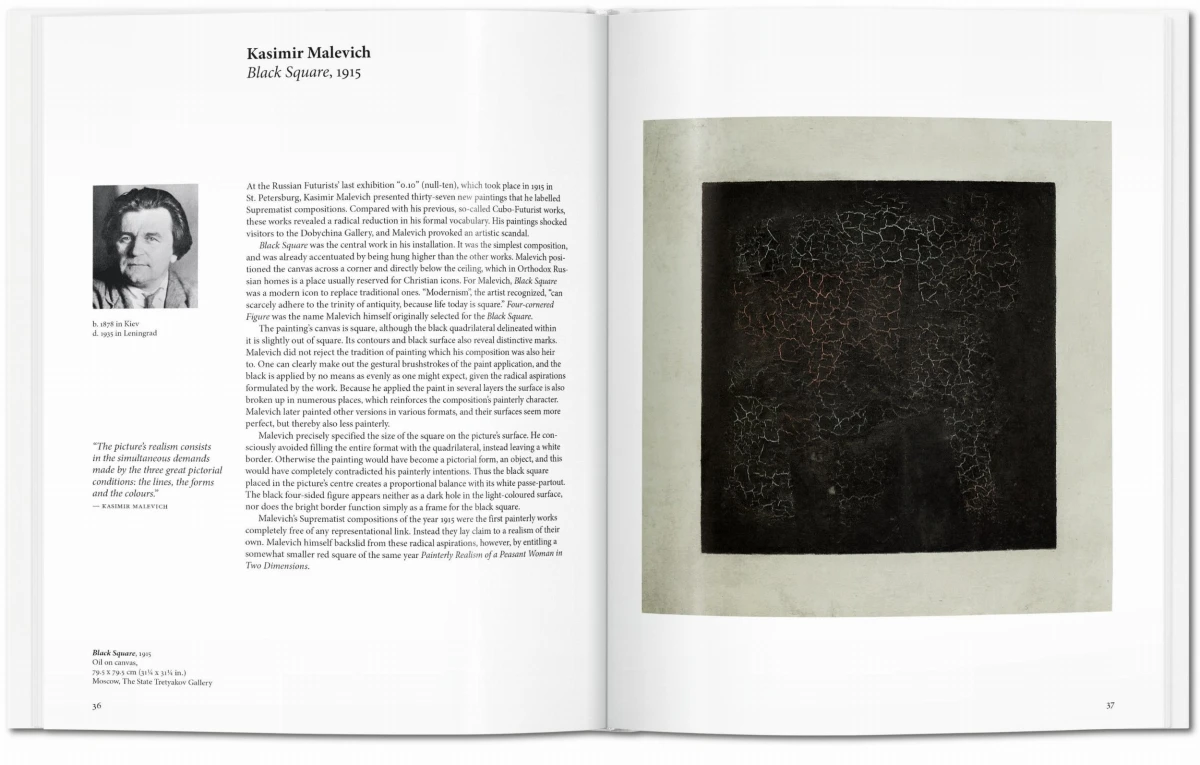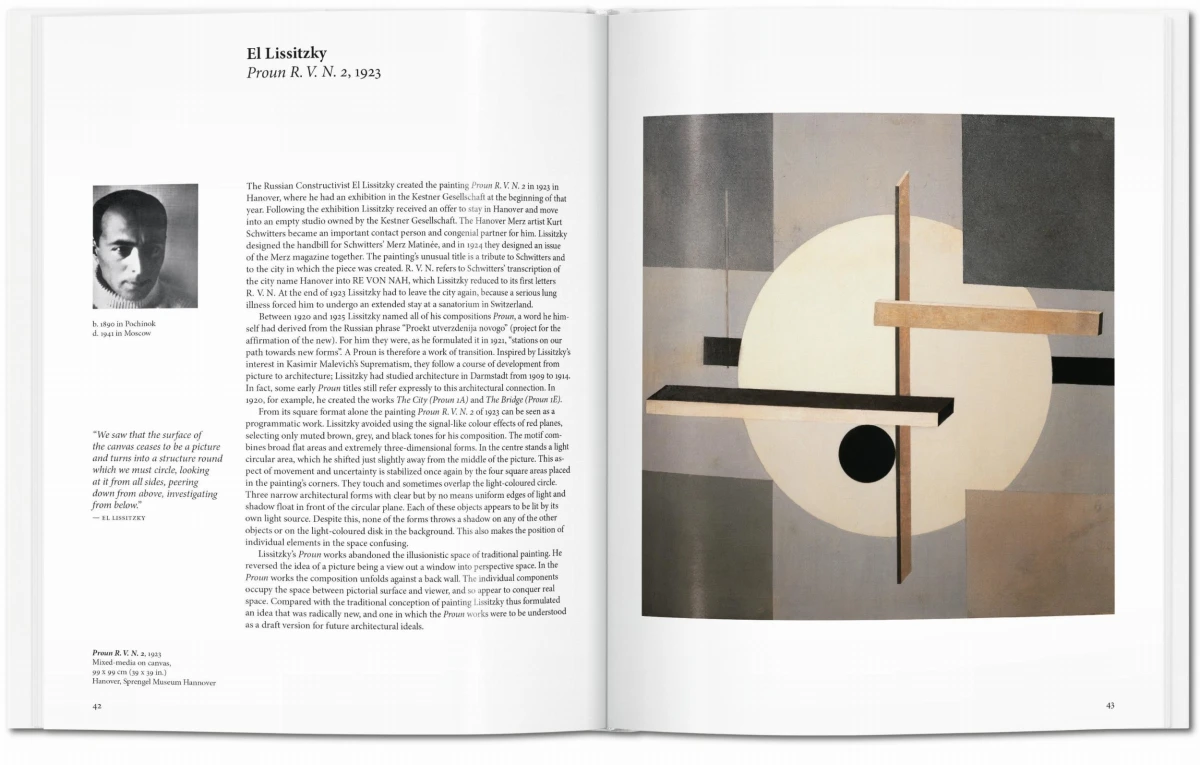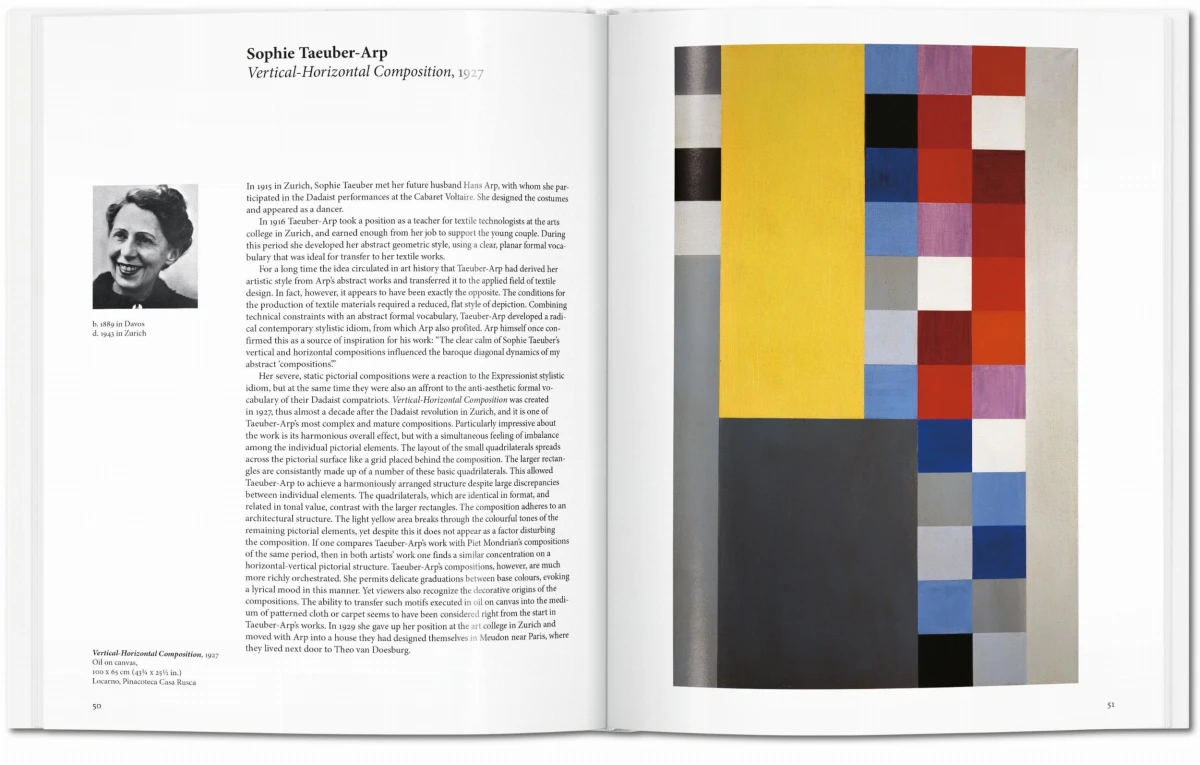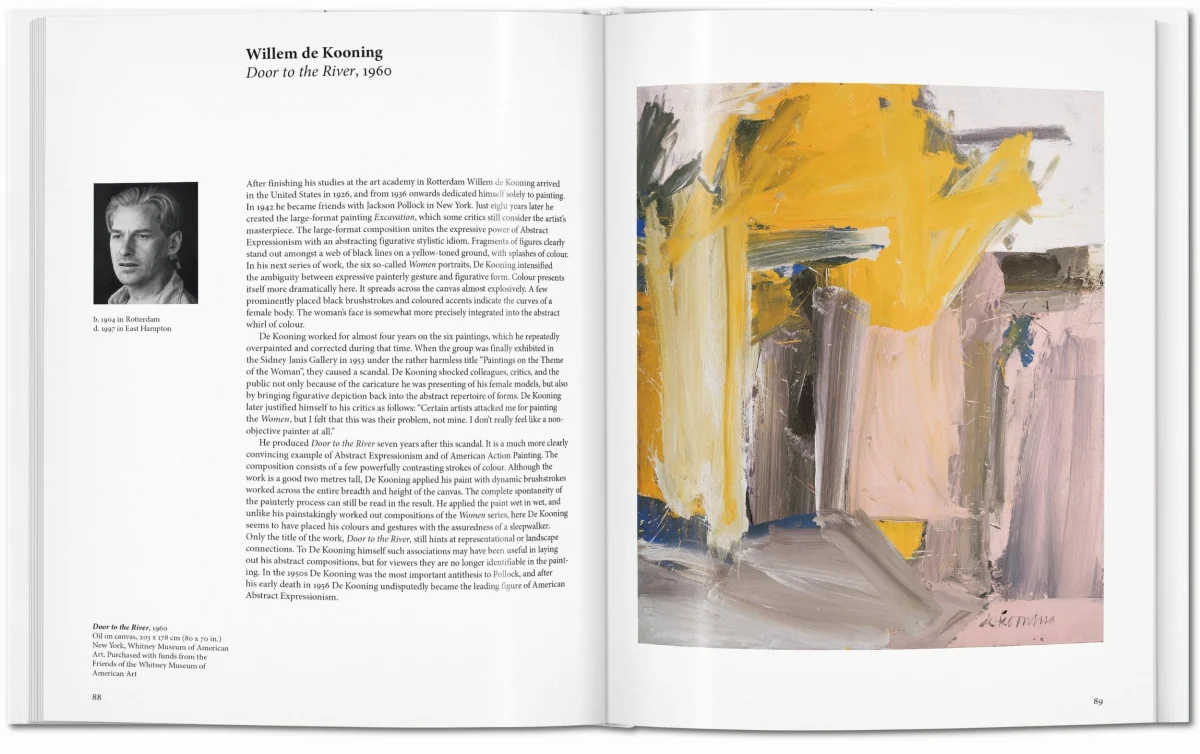1 / 7
Abstract Art
20
Il XX secolo ha visto l'arte diventare astratta. Dove un tempo prevalevano chiare certezze e forme indiscutibili, nel XX secolo sembrava regnare l'anarchia. La sensibilità si diffondeva in strane forme, i colori assumevano nuovi significati, le linee abbandonavano il significato letterale. Immergiti nell'arte più dinamica e progressista della modernità.
Copertina rigida, 8.3 x 10.2 in., 1.25 lb, 96 pagine

Abstract Art
20Let’s Get Abstract
Making sense of revolutionary new forms
Abstraction shook Western art to its core. In the early part of the 20th century, it refuted the reign of clear, indisputable forms and confronted audiences instead with vivid visual poems devoid of conventional representational imagery and characterized by allegories of emotion and sensation.
This radical artistic adventure established new artistic means, as much as narratives. Expression became characterized by shocking juxtapositions of color, light, and line. Artists abandoned the conventions of brush and easel and played with new materials and methods of artistic gesture: commercial paints and housepainter’s brushes, working on unstretched and unprimed canvases, moving the canvas to the floor, and applying paint with hands.
This essential introduction spans the international breadth, conceptual depth, and seismic impact of abstract art with a thorough survey not only of the big names such as Picasso, Klee, Kline, Rothko, and Pollock, but also lesser-known figures who made equally significant contributions, including Antoni Tàpies, K. O. Götz, Ad Reinhardt, and Sophie Taeuber-Arp.
This radical artistic adventure established new artistic means, as much as narratives. Expression became characterized by shocking juxtapositions of color, light, and line. Artists abandoned the conventions of brush and easel and played with new materials and methods of artistic gesture: commercial paints and housepainter’s brushes, working on unstretched and unprimed canvases, moving the canvas to the floor, and applying paint with hands.
This essential introduction spans the international breadth, conceptual depth, and seismic impact of abstract art with a thorough survey not only of the big names such as Picasso, Klee, Kline, Rothko, and Pollock, but also lesser-known figures who made equally significant contributions, including Antoni Tàpies, K. O. Götz, Ad Reinhardt, and Sophie Taeuber-Arp.
L'autore
Dietmar Elger studied art history, history, and literature at the University of Hamburg. In 1984/85, he was secretary of Gerhard Richter’s studio and between 1989 and 2006 curator for painting and sculpture at the Sprengel Museum, Hanover. He has organized numerous exhibitions on modern and contemporary art and has directed the Gerhard Richter Archive at the Staatliche Kunstsammlungen Dresden since 2006. For TASCHEN he has authored the volumes Expressionism, Dadaism, and Abstract Art.
Abstract Art
Copertina rigida, 21 x 26 cm, 0.57 kg, 96 pagineISBN 978-3-8365-4678-2
Edizione: IngleseScarica qui le immagini del prodotto
Nata nel 1985, la serie Basic Art è diventata la collezione di libri d’arte più venduta al mondo. Ogni libro della serie Basic Art di TASCHEN contiene:
una cronologia dettagliata riassuntiva della vita e delle opere dell’artista, inserito nel contesto storico e culturale in cui è vissuto
una biografia concisa
circa 100 illustrazioni con didascalie esplicative
Non sono state ancora pubblicate recensioni per questo articolo. Sii il primo a valutare questo prodotto.

